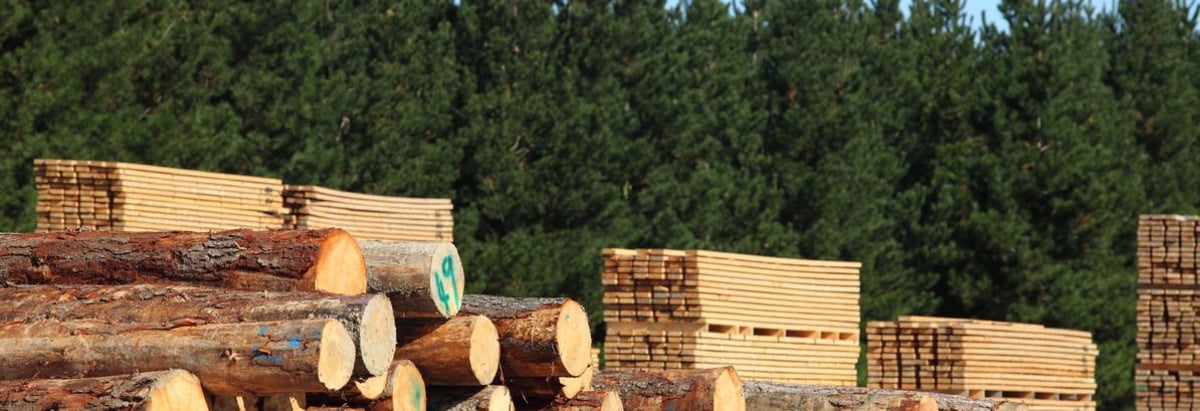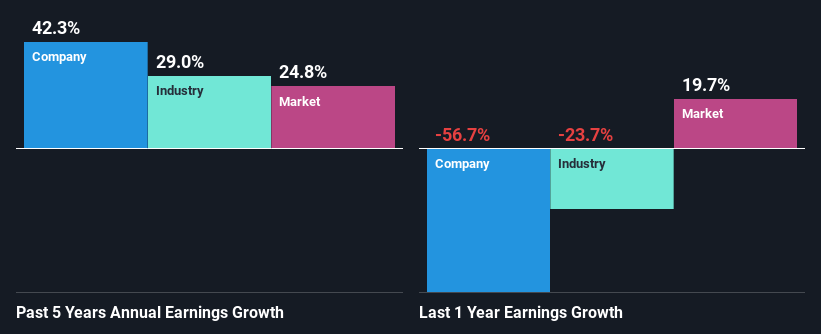- India
- /
- Paper and Forestry Products
- /
- NSEI:WIPL
The Western India Plywoods Limited's (NSE:WIPL) Stock Has Shown Weakness Lately But Financial Prospects Look Decent: Is The Market Wrong?

Western India Plywoods (NSE:WIPL) has had a rough three months with its share price down 32%. But if you pay close attention, you might find that its key financial indicators look quite decent, which could mean that the stock could potentially rise in the long-term given how markets usually reward more resilient long-term fundamentals. Specifically, we decided to study Western India Plywoods' ROE in this article.
ROE or return on equity is a useful tool to assess how effectively a company can generate returns on the investment it received from its shareholders. Simply put, it is used to assess the profitability of a company in relation to its equity capital.
How Do You Calculate Return On Equity?
The formula for return on equity is:
Return on Equity = Net Profit (from continuing operations) ÷ Shareholders' Equity
So, based on the above formula, the ROE for Western India Plywoods is:
4.5% = ₹19m ÷ ₹433m (Based on the trailing twelve months to December 2024).
The 'return' is the amount earned after tax over the last twelve months. Another way to think of that is that for every ₹1 worth of equity, the company was able to earn ₹0.04 in profit.
View our latest analysis for Western India Plywoods
What Has ROE Got To Do With Earnings Growth?
We have already established that ROE serves as an efficient profit-generating gauge for a company's future earnings. We now need to evaluate how much profit the company reinvests or "retains" for future growth which then gives us an idea about the growth potential of the company. Assuming everything else remains unchanged, the higher the ROE and profit retention, the higher the growth rate of a company compared to companies that don't necessarily bear these characteristics.
A Side By Side comparison of Western India Plywoods' Earnings Growth And 4.5% ROE
As you can see, Western India Plywoods' ROE looks pretty weak. Even when compared to the industry average of 6.1%, the ROE figure is pretty disappointing. However, we we're pleasantly surprised to see that Western India Plywoods grew its net income at a significant rate of 42% in the last five years. We believe that there might be other aspects that are positively influencing the company's earnings growth. Such as - high earnings retention or an efficient management in place.
We then compared Western India Plywoods' net income growth with the industry and we're pleased to see that the company's growth figure is higher when compared with the industry which has a growth rate of 29% in the same 5-year period.

Earnings growth is a huge factor in stock valuation. The investor should try to establish if the expected growth or decline in earnings, whichever the case may be, is priced in. By doing so, they will have an idea if the stock is headed into clear blue waters or if swampy waters await. If you're wondering about Western India Plywoods''s valuation, check out this gauge of its price-to-earnings ratio , as compared to its industry.
Is Western India Plywoods Using Its Retained Earnings Effectively?
Western India Plywoods' three-year median payout ratio is a pretty moderate 30%, meaning the company retains 70% of its income. By the looks of it, the dividend is well covered and Western India Plywoods is reinvesting its profits efficiently as evidenced by its exceptional growth which we discussed above.
Moreover, Western India Plywoods is determined to keep sharing its profits with shareholders which we infer from its long history of six years of paying a dividend.
Conclusion
In total, it does look like Western India Plywoods has some positive aspects to its business. Despite its low rate of return, the fact that the company reinvests a very high portion of its profits into its business, no doubt contributed to its high earnings growth. While we won't completely dismiss the company, what we would do, is try to ascertain how risky the business is to make a more informed decision around the company. Our risks dashboard would have the 3 risks we have identified for Western India Plywoods.
Valuation is complex, but we're here to simplify it.
Discover if Western India Plywoods might be undervalued or overvalued with our detailed analysis, featuring fair value estimates, potential risks, dividends, insider trades, and its financial condition.
Access Free AnalysisHave feedback on this article? Concerned about the content? Get in touch with us directly. Alternatively, email editorial-team (at) simplywallst.com.
This article by Simply Wall St is general in nature. We provide commentary based on historical data and analyst forecasts only using an unbiased methodology and our articles are not intended to be financial advice. It does not constitute a recommendation to buy or sell any stock, and does not take account of your objectives, or your financial situation. We aim to bring you long-term focused analysis driven by fundamental data. Note that our analysis may not factor in the latest price-sensitive company announcements or qualitative material. Simply Wall St has no position in any stocks mentioned.
About NSEI:WIPL
Western India Plywoods
Manufactures and sells hardboard, plywood, and compreg wood products in India and internationally.
Excellent balance sheet second-rate dividend payer.
Similar Companies
Market Insights
Community Narratives



